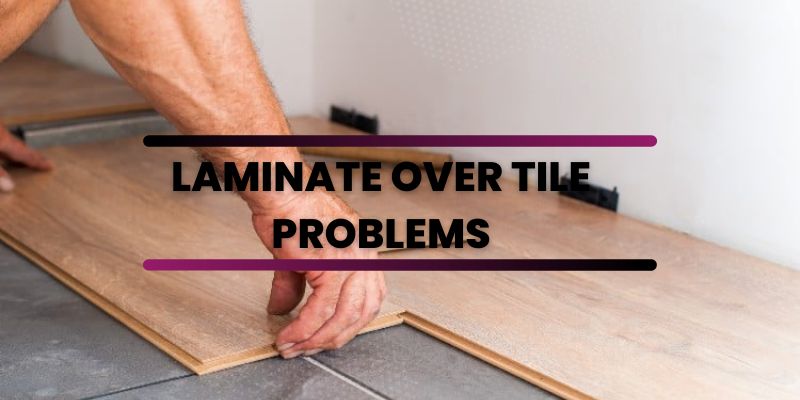Laminate flooring over tile is becoming increasingly popular due to its affordability and easy installation process. However, there are some issues that can arise when laying down laminate over tile, and it’s important to be aware of them before beginning any installation process.
The most common problem associated with laying laminate over tile is that the tile may not be level. This can cause the laminate planks to become uneven or even buckle. In order to avoid this issue, it’s important to make sure that the tile is level before laying the laminate. This can be done by using a laser level or a spirit level. If the tile isn’t level, it’s best to either remove the tile or level it out before installing the laminate.

Another issue that can arise with laminate over tile is that the tile may be too thick. When this is the case, it can cause the laminate planks to not fit correctly. To avoid this problem, it’s important to make sure that the thickness of the tile is not more than 1/8 of an inch. If the tile is thicker than this, it’s best to either replace the tile with thinner tile or use a leveling compound to even out the surface.
Lastly, it’s important to be aware that the adhesive used to install the laminate may not adhere properly to the tile. This can cause the laminate planks to come loose and cause a tripping hazard. To avoid this, it’s important to make sure that the adhesive used is rated for tile surfaces. Additionally, it’s important to make sure that the adhesive is spread evenly across the tile surface.
Overall, there are some potential issues that can arise when laying laminate over tile. It’s important to be aware of these issues so that they can be avoided. By making sure that the tile is level, the thickness is not more than 1/8 of an inch, and the right adhesive is used, it’s possible to have a successful laminate installation over the tile.
In summary:
1. Expansion: Laminate flooring is not as flexible as tile, so it can’t expand and contract with temperature changes as easily as tile. This can cause buckling and warping over time.
2. Moisture: Laminate flooring is not waterproof like tile and can be damaged by water. If installed over tile, moisture can seep into the seams and cause swelling, warping, and discoloration.
3. Uneven Surfaces: If the tile floor is uneven, it can cause the laminate flooring to unevenly settle and cause buckling or warping.
4. Adhesion: Installing laminate flooring over tile can be difficult because the adhesive may not properly bond with the tile surface.
5. Installation Difficulty: Installing laminate flooring over tile can be more difficult than installing it over a concrete subfloor. This is because tile floors are uneven, and it can be difficult to get the laminate planks to fit properly.
How to install Laminate over tile
1. Prepare the tile surface. Ensure that the surface is clean and free of dust, dirt, and debris before laying the laminate.
2. Install a vapor barrier. Install a vapor barrier on the tile before laying the laminate to prevent moisture from seeping up through the tile and damaging the flooring.
3. Lay the laminate. Begin laying the laminate from the center of the room and work outward. Make sure that the boards are tight against one another for a secure fit.
4. Secure the laminate. Secure the laminate to the tile with a bead of construction adhesive along the edges of the boards.
5. Trim the excess. Trim the excess laminate along the edges of the room using a sharp utility knife. 6. Install the transition pieces. Install transition pieces along the edges of the room where the laminate meets other surfaces, such as carpet or vinyl.
7. Finish the installation. Finish the installation by adding the baseboard and any other trim pieces.
How to maintain Laminate floor installed over tile
1. Clean regularly: To keep your laminate looking its best, regular cleaning is necessary. Use a damp cloth to wipe away dust, dirt, and spills. Avoid using abrasive cleaners, as they can damage the finish.
2. Seal tile: Before installing laminate over the tile, make sure the tile is properly sealed to prevent moisture from seeping underneath.
3. Use a vapor barrier: A vapor barrier should be installed between the tile and the laminate to prevent moisture from entering the subfloor.
4. Use spacers: When installing laminate over tile, use spacers between the tiles and the laminate to ensure there is adequate space for expansion and contraction.
5. Protect corners: To protect the corners of your laminate, use corner protectors or foam padding.
6. Use felt pads: Place felt pads under furniture and other heavy items to prevent scratches and indentations.
7. Avoid standing water: Make sure to wipe up spills and standing water as soon as possible to prevent moisture damage.
